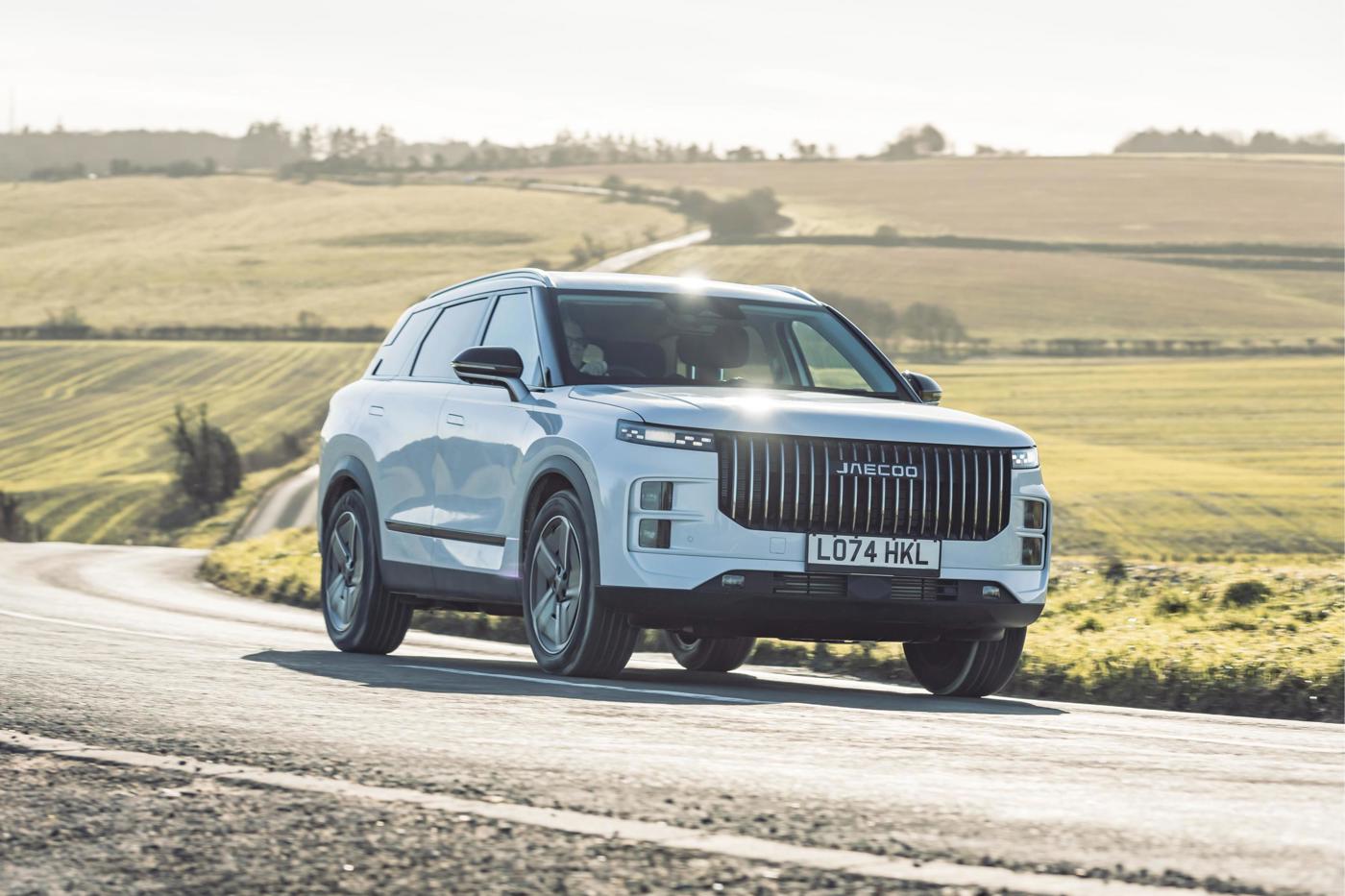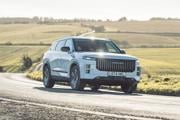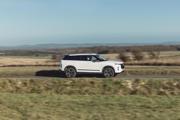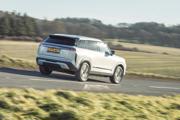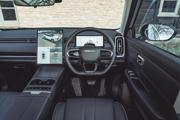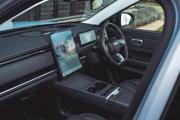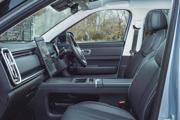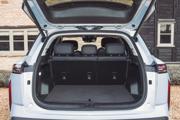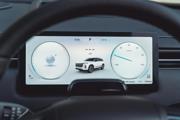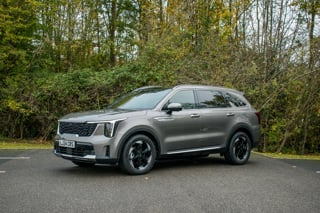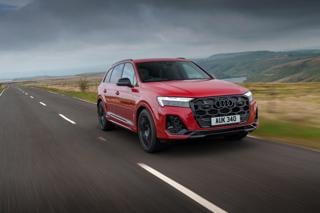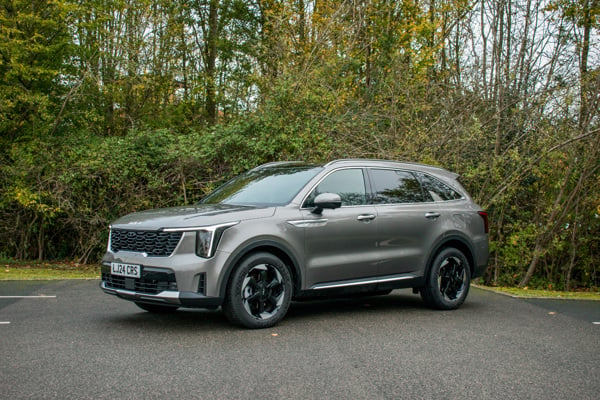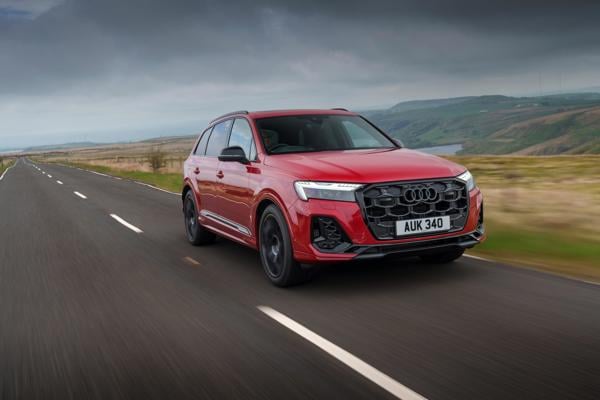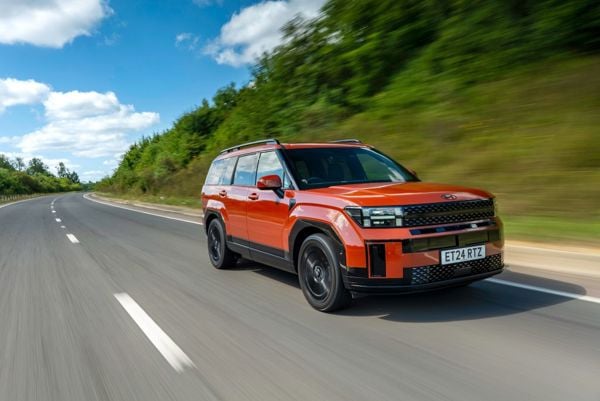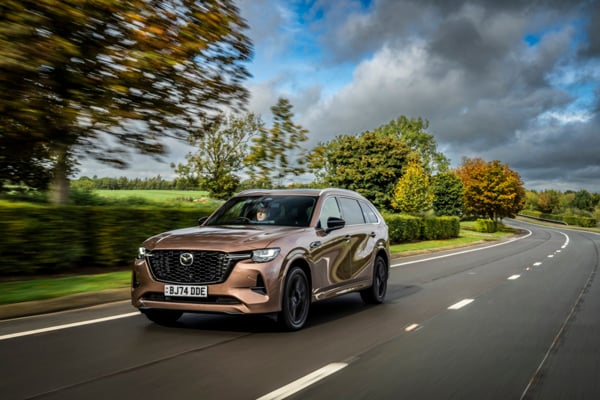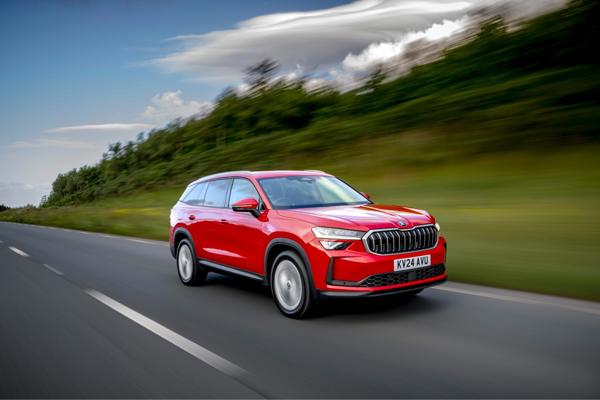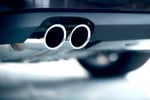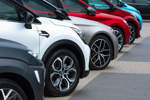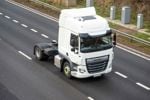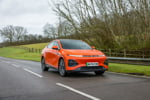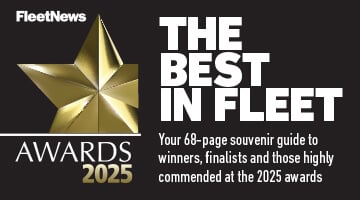Review
The Jaecoo 7 isn’t a fully-polished, flawless machine but it comes at a compelling price point for company car drivers; especially when you look at the plug-in hybrid version.
Overview
Before we talk about the Jaecoo 7 we probably need to establish what ‘Jaecoo’ actually is. There’s no shortage of new brands arriving in the UK and this latest Chinese challenger has serious aspirations.
Born from Chery Automobile, one of the largest car makers in the world, Jaecoo applies a sprinkle of European garnish to existing technologies and platforms from its homeland.
In the UK, the company has already established a network of 71 dealerships, and it plans to open 59 more by the end of 2025.
This network will be a key driver in achieving a combined 45,000 registrations with sister brand Omoda, this year.
The Jaecoo 7 is a mid-size SUV that aims to offer a luxury experience at a mainstream price.
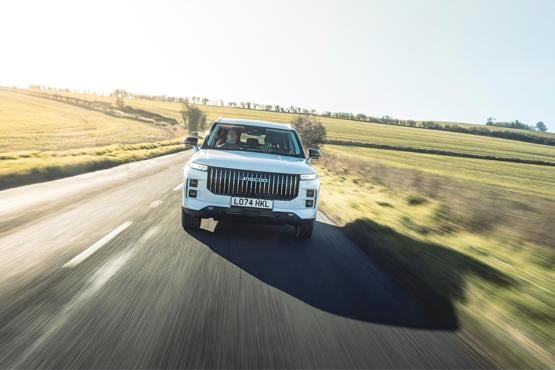
It’s no coincidence that the car bears a resemblance to Land Rover models. Chery has been in a joint venture with JLR for the last ten years, producing Jaguars and Land Rovers for the Chinese market.
The 7's distinctive front end, complete with its ‘waterfall’ chrome grille, sleek headlights and imposing stance certainly draws the eye.
The model line-up consists of two trim levels (Deluxe and Luxury) and the option of a petrol or plug-in hybrid powertrain. The Jaecoo 7 petrol comes with front- or all-wheel-drive, while the plug-in hybrid – named Super Hybrid System (SHS) – is front-wheel-drive only.
Prices start at £29,435, pitching the Jaecoo 7 squarely against industry heavyweights like the Nissan Qashqai and Kia Sportage.
Comfort and practicality
The first thing you need to know about the Jaecoo 7 is that it’s smaller than it appears in pictures but larger than it looks in real life. Confused? Well, it’s that boxy design and flat nose that deceives. In photos you’d be forgiven for thinking it’s a large SUV, but in the flesh it seems a lot smaller than a Hyundai Tucson despite both having a near identical footprint.
The overhangs are minimal, meaning the bulk of its length sits within the wheelbase. This is good for passenger space, with decent legroom front and rear plus a large 500-litre boot.
Opt for the SHS powertrain and you lose some luggage capacity, with the total dropping to 412 litres.
Interior quality is impressive and it’s clear Jaecoo has attempted to give the car a luxury feel through some of its material choices. Dig deeper and you realise the leather is synthetic and some of the more tactile pieces are just painted plastic. There’s more than a whiff of JLR to the design and layout, but it’s an uncluttered and modern cabin that doesn’t feel out-of-place when compared to rival models.
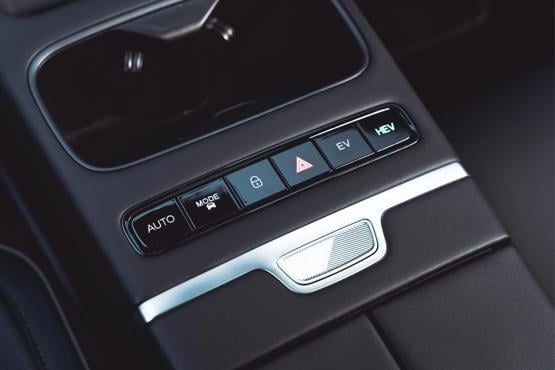
The raised centre console houses cupholders and a wireless charging pad for two smartphones, as well as a cooled storage compartment. On petrol versions there’s a conventional gear selector, along with a rotary drive mode switch and buttons for the heated seats. The plug-in hybrid is different, placing the gear selector on the steering column and offering a smaller selection of physical switches.
At night, configurable ambient lighting bathes the interior in a soft hue, while the full-length panoramic sunroof gives a light and airy feel during the day.
The specification continues with heated and electrically adjustable front seats, electric folding door mirrors, keyless entry and dual zone climate control.
Step up from the Deluxe to Luxury and you get front seat cooling, rear seat heating, a heated steering wheel and an air purification system.
Safety and technology
In keeping with its minimalist interior design, the Jaecoo 7 is heavily reliant on its central touchscreen. The 13.2-inch screen is mounted in a portrait orientation and uses an android-based operating system that is very similar, at least in appearance, to the one used by BYD.
In Deluxe models the screen grows to 14.8 inches and there’s an impressive Sony audio system.
General usability is acceptable. You can access some functions via a quick-access menu by simply swiping down from the top of the screen. The interface is very much like a tablet and lacks the structure of systems used by more established brands. Each function is opened like an app, including the DAB radio, which was unable to keep a signal lock on any of the three cars we drove.
Thankfully there’s Android Auto and Apple Carplay, which we’d recommend people stick to using over the native sat-nav and music apps.
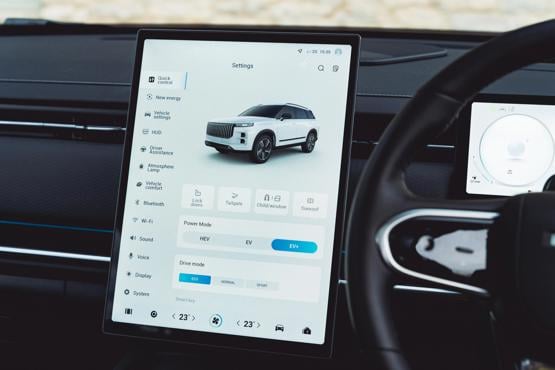
We found the instrument cluster display a little fiddly to use. There’s a variety of customisable views, controlled using a combination of buttons on the steering wheel. The trip computer was especially complicated to find and understand, only giving an efficiency figure for the last 50 miles driven.
Safety aids are plentiful on the Jaecoo 7 and include autonomous braking, parking sensors, lane keep assist and blind spot monitor. It also comes with adaptive cruise control and a really good surround view camera system. The latter gives a full view of the car’s surroundings, and comes as standard on both trim levels. It even has the ability to show the area of ground beneath the car, which is great for avoiding hidden kerbs.
Our only gripe was that the camera display takes over the central screen every time you switch on the indicator, which is annoying when you’re trying to navigate an unfamiliar city.
The legally mandated aids, like speed limit warning, lane departure warning and driver attention alert are relatively well calibrated. While easily disabled, we opted to leave the systems on and found the warnings to be fair and not too intrusive.
Driveability and efficiency
We drove all three powertrain variants available on the Jaecoo 7 and found each to have different characteristics.
The front-driven petrol model uses a 1.6-litre turbocharged petrol engine with a seven-speed automatic transmission. It develops 145PS and gives modest performance. There’s a tendency to scrabble for grip when pulling away and this is mainly due to the car’s throttle calibration. It gives very little for the first half of the pedal, but when you push a little harder there’s a big dump of power that overwhelms the front tyres.
Ride quality is acceptable offering neither a particularly dynamic feel nor a soft and comforting one. You can adjust the steering and brake pedal feel with ‘normal’ or ‘sport’ settings. Again, don’t expect a major transformation. Most drivers are likely to pick the option that feels most closely aligned to what they’re used to driving.
The all-wheel-drive version feels sweeter on the road. It has a little more confidence and wheelspin is kept at bay. It’s the least efficient model in the line-up though, struggling to surpass 30mpg in our test.
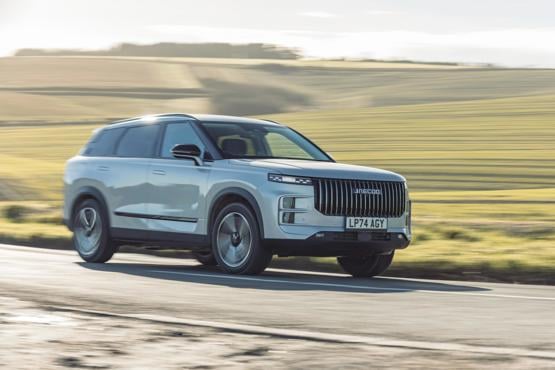
In the fleet market it’s the SHS plug-in hybrid that will be most favoured. Firstly, with an official zero-emission range of 57 miles, it sits comfortably in the 8% benefit-in-kind tax bracket. You also get the largest power output, at 204PS.
Most of the work is done by the electric motor, rather than the 1.5-litre petrol engine, which means the 18.3kWh battery never gets completely flat. You can drive in pure EV mode for 35-40 miles then the petrol engine kicks in to keep the battery level charged.
On the motorway, or in light-throttle cruising, the engine can send power directly to the wheels. Under full power, the engine revs up but only to supply more power to the motor for full acceleration.
Jaecoo claims up to 403mpg is possible. In reality, you’re going to get around 45mpg, unless you drive almost exclusively in EV mode. There is 40kW rapid charging, to replenish the battery in around half an hour.
The SHS has a similar traction issue to the petrol, with its front wheels sometimes unable to deal with the engine’s power. We also found the ride to be firmer, as a result of the car’s heavier kerb weight.
While it doesn’t manage a class-best driving experience, the Jaecoo 7 is smooth and quiet. It’s not very engaging or sporty and the powertrains aren’t the most efficient or responsive. But if you want that then it’s almost £20,000 more for a BMW X1 PHEV.
Company car tax and running costs
The petrol-powered Jaecoo 7 has high CO2 emissions from 169g/km, so for this section of the review we’ll focus on the SHS plug-in hybrid.
The Jaecoo 7 SHS comes in Luxury trim only, priced from £35,065. This makes it comfortably cheaper than the segment’s favoured Kia Sportage and Hyundai Tucson PHEVs by around £6,000.
Only the Citroen C5 Aircross comes close, when it comes to list price, but the Jaecoo still has an advantage in overall running costs.
Figures from Cap HPI, obtained via the Fleet News Running Costs Tool, suggest the Jaecoo 7 SHS will cost 32p per mile over a four-year (80,000-mile) cycle. For the Citroen and Kia its 39ppm, while the Hyundai costs 41ppm.
With an 8% BiK rate, the Jaecoo 7 will cost drivers less than £50 per month in tax (20% taxpayer).
As with all new brands there remains a question mark over future residual values, reliability and aftersales. Jaecoo hopes its large dealer network and commitment to to the UK market will ally any fears. It also provides a seven year/100,000-mile warranty.
Specs
| Manufacturer | Jaecoo |
| Model | 7 Estate |
| Specification | Jaecoo 7 Estate 1.5T PHEV Luxury 5dr Auto |
| Model Year | 2024.00 |
| Annual VED (Road tax) | £0 |
| BIK List Price | £35,000 |
| Range | 56.00mile(s) |
| CO2 | 23g/km |
| BIK Percentage | 8% |
| Insurance Group | N/A |
| CC | 1,499 |
| Fuel Type | Petrol Parallel PHEV |
| Vehicle Type | Large SUV |
| Luggage capacity (Seats up) | 500litres |
| Doors | 5 |
Running Costs
| P11D | £35,000 |
| Cost per mile | 37.95ppm |
| Residual value | £16,600 |
| Insurance group | N/A |
| Fuel Type | Petrol Parallel PHEV |
| Cost per mile | 102.42ppm |
| Fuel | 1.65ppm |
| Depreciation | 98.55ppm |
| Service maintenance and repair | 2.22ppm |
Rivals
Info at a glance
-
P11D Price
£35,000
-
MPG
403.0 (WLTP) -
CO2 Emissions
23g/km -
BIK %
8% -
Running cost
3 Year 60k : £16,600 4 Year 80k : £13,525 -
Fuel Type
Petrol Parallel PHEV -
Range
56.00mile(s)



